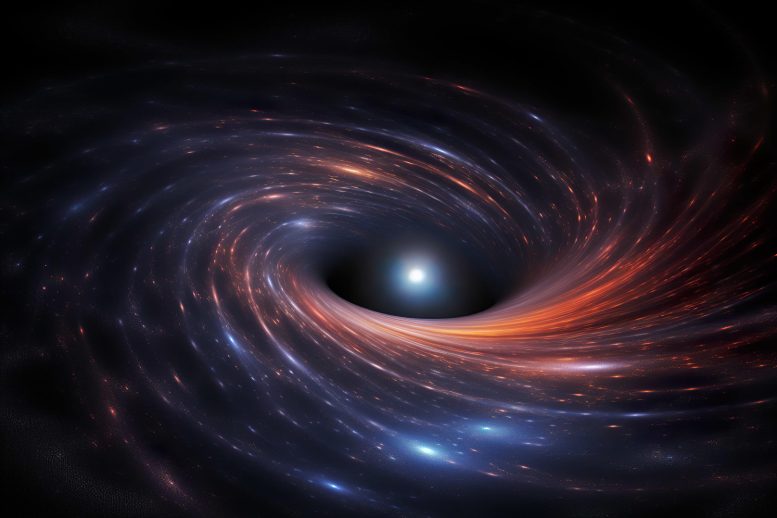
A new study from SISSA suggests that dark matter interacts with gravity in a non-local way, challenging traditional theories and offering new perspectives on the nature of dark matter. Utilizing fractional calculus, the researchers found that this non-local interaction more accurately describes the motion of stars, especially in small-sized galaxies.
A recent study from SISSA proposes a new model of non-local interaction between the dark matter of a galaxy and gravity.
Isaac Newton described his theory of gravity as a force that acts instantaneously across space: a planet immediately senses the effects of another astronomical object, regardless of the separation between them. This aspect inspired Einstein to create the renowned theory of general relativity, where gravity becomes a local deformation of spacetime.
The principle of locality states that an object is directly influenced only by its surrounding environment: distant objects cannot communicate instantaneously, only what is here right now matters. However, in the past century, with the birth and development of quantum mechanics, physicists discovered that non-local phenomena not only exist but are fundamental to understanding the nature of reality.
Now, a new study from SISSA – Scuola Internazionale Superiore di Studi Avanzati, recently published in The Astrophysical Journal, suggests that dark matter, one of the most mysterious components of the Universe, interacts with gravity in a non-local way. According to the authors, Ph.D. students Francesco Benetti and Giovanni Gandolfi, along with their supervisor Andrea Lapi, this discovery could provide a fresh perspective on the still unclear nature of dark matter.
Dark matter is a fundamental component of nature: it is responsible for the formation of the structures we observe in the Universe today and surrounds luminous matter in galaxies, contributing to the motion of the stars we see in the sky. However, the nature of dark matter, especially its interaction with gravity in smaller galaxies, remains mysterious.
“In recent decades, the scientific community has made great efforts to understand these enigmatic phenomena, but many questions remain unanswered. To explore the nature of dark matter and its interaction with gravity, a new approach may be necessary,” explain the authors of the study. The new research from SISSA has precisely explored this intriguing path.
The study proposes a new model of non-local interaction between the dark matter of a galaxy and gravity: “It’s as if all the matter in the universe tells the dark matter in a galaxy how to move,” state the authors.
To model this non-locality, fractional calculus has been employed, a mathematical tool first developed in the 17th century and recently found applications in various areas of physics. The power of this calculus had never been tested in astrophysics before.
“We wondered if fractional calculus could be the key to understanding the mysterious nature of dark matter and its interaction with gravity, and surprisingly, experimental results on thousands of galaxies of different types have shown that the new model more accurately describes the motion of stars compared to the standard theory of gravity,” explain the authors.
This non-locality appears to emerge as a collective behavior of dark matter’s particles within a confined system, proving particularly relevant in small-sized galaxies. A thorough understanding of this phenomenon could bring us closer what dark matter really is.
“However, many questions remain to be answered,” emphasize the authors. “How does non-locality precisely emerge? What are its implications within larger structures, such as galaxy clusters, or in the phenomenon of gravitational lensing, which allows us to observe distant celestial objects?”
Moreover, it will be necessary to reconsider the standard model of cosmology considering this new mechanism.
“Further studies will be conducted to explore all these implications and more. We wouldn’t be surprised to discover that other unresolved questions about the Universe could be resolved by the newly proposed non-locality.”
Advancements in understanding the nature of dark matter represent a significant step towards a better knowledge of our Universe. Ongoing research continues to provide new perspectives and brings us closer to a comprehensive understanding of the phenomena that surround us.
Reference: “Dark Matter in Fractional Gravity. I. Astrophysical Tests on Galactic Scales” by Francesco Benetti, Andrea Lapi, Giovanni Gandolfi, Paolo Salucci, and Luigi Danese, 31 May 2023, The Astrophysical Journal.
DOI: 10.3847/1538-4357/acc8ca

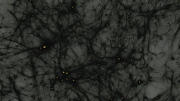
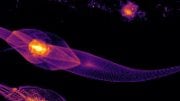

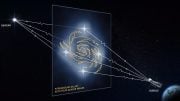
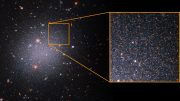



Dark matter in a collected way operate on movement of galaxy as if trying to form same quantum level super chemistry reaction as spooky action at a distance. This is more possible at super conductive transient stage as collective reaction as observed by Chicago University research team.
Gravitational information carrying a conserved quantized angular moment of nearly infinitesimal amount, infinitesimal to the point of not clearly emerging until its expressed vector field content has propagated far across of a typical galaxy such as the MW, could appear “nonlocal” in the sense that, for example, the effects of secondary inwardly directed peaks around the periphery of a galaxy may seem inordinately responsive to translations of mass at the galactic core. In other words it becomes easy to naively underestimate the strength of the gravitational couplings spanning an average galaxy like the MW, even as the galaxy behaves much like a coordinated wave outlining various phases of angular vector field roll typically dominated by the core, behaving like a gravitationally entangled object to the extent that galactic gravitational couplings appear to be notably stronger in places far apart, yet seemingly contradicted in other places half as far apart.
Dark matter phase of matter afterall is just matter, which isn’t a different entity, but just a perspective (of human). The entity that differs is the infinite emptiness.
So the local or universal dark matter are 2 different phases of dark matter. To elaborate, think of contents floating in the ocean, where ocean is the dark matter containing contents floating in anywhere in the ocean, regardless of in the clusters of ocean life or its surroundings and empty regions.
The natural concept of nature is an inclusive concept with infinity, eternity, spirituality, etc, which may require exclusive explanations as necessary.
all the energy in the universe from all the radiating stars arrives at all places in space continually .this energy causes a force .between two masses there is a low energy .caused by shadeing / shielding .so Newtons apparrent attraction …becomes a pushing force …iaw inverse sq. law and general relativity .the field equations model it ..but only seeing it from this view point shows how big G is produced .
We can’t just keep throwing fudge factors into theories to explain observations. IF you got a testable hypothesis fine, test it. But MOND and Lambda CDM are just added complexities to fit observations. I do like the axion hypothesis, but it like the name suggest (Axion was a detergent) they also were invented to explain observations.
I’m not sure what you are basing your unquantified opinion on.
LCDM is a theory without “fudge factors”, and it is quantitively the best theory. The axion hypothesis, specifically, fits LCDM.
I began demonstrating the local/radiant nature of angular lines of gravity force in rotating wheels in a video on YouTube in 2012. Since, censored on YouTube about Covid-19 and the real causes of most of that falsely alleged mortality, I’ve moved my videos to a non-monetary video channel on Odysee dot com@/charlesgshaver. Set aside dogmatic old labels and imagine, if you can, a rotating wheel in earth’s ambient field of gravity as being a boat propeller in a body of water in motion. So much time and money being wasted on perpetuating a modern myth.
A video demonstrates nothing. But a peer reviewed paper might, so you can try that before spamming us with time (and money) wasting irrelevancies.
Thanks for the reply and the suggestion but, despite a decade of demonstrating and writing on the subject, when it comes to gravity I still have no professional credentials and no peers. I usually include how pulsing lines of gravity force can cause the scattered pattern of photons, electrons and some large molecules seen in classic double-slit experiments, the misinterpretation of which I believe first led to the false assumption of duality and quantum mechanics.
Perhaps a more highly educated young physicist could create a formula to factor-in the intensification of gravity due to the mass and motion (individual atoms to galaxies with supermassive black holes) it takes to account for all of the alleged dark matter in the visible universe? As to the ‘dark energy,’ I’ve explained that a number of times too. Because individual lines of gravity force can affect even photons, they accelerate on widening lines of gravity force as they depart their distant sources (blue shift) and they decelerate on narrowing lines of gravity force when arriving to earth (red shift). Was there a ‘Big Bang?’ Is the universe expanding? Who really knows for sure?
This is entirely incorrect.
Gravity happens also forward from the time it was created and also the other way
As you all know, the theoretical value for the cosmological constant is different from the observed value.
The research, titled “Symmetry of Cosmological Observables, a Mirror World Dark Sector, and the Hubble Constant,” was published recently in Physical Review Letters. This research shows mathematically that a lot of the observations we do in cosmology have an inherent symmetry under rescaling the universe as a whole. In practice, this scaling symmetry could only be realized by including a mirror world in the model—a parallel universe with new particles that are all copies of known particles,” said Cyr-Racine.
“This might seem crazy at face value, but such mirror worlds have a large physics literature in a completely different context since they can help solve important problem in particle physics,” explains Cyr-Racine. “Our work allows us to link, for the first time, this large literature to an important problem in cosmology.”
There isn’t any theoretical value within LCDM. The value is based on observations.*
The paper you points to suggests a transformation map and then, out of the blue, that the map symmetries are important. There is no reason given to think so.
*Weinberg’s anthropic value is also observational based on LCDM theory.
Dark matter researchers are morons. If you didn’t get that the universe is elastice from General Relativity, then you are a moron. Mass deforms spacetime. What kind of deformation? Elastic deformation. What kind of waves? Gravity waves. What esle do you need to explain “dark matter” observations? Superposition. Go ahead and waste trillions of dollars chasing moron scientist dumbest ideas.
I’ll take Einstein over Dark Matter any day. This promotion of Dark matter, because of a spooky name has got to stop. Dark Matter was and still is something researchers used to call something they did not have enough knowledge to understand.
Einstein accepted dark matter since it fits with his theories. (In most local cases you can approximate general relativity with newtonian gravity, it’s what used for spiral galaxy rotation curves for instance.)
We understand a great deal about dark matter by now.
Sagan-Warhol Corollary: Extraordinary claims require extraordinary evidence, but at least you will be world-famous for 15 minutes.
It is yet another proposal to fit galaxy luminosity observations to a model with free parameters.
They don’t discuss if the model is better in a model fit cost perspective, and they use very few galaxies of each kind without discussing the statistical power of their data.
This is so far quite forgettable.
Let’s do better. Gravity is NOT instantaneous. It travels at the spread of light. https://www.astronomy.com/science/why-do-physicists-think-gravity-travels-at-the-speed-of-light/
Nothing travels faster than the speed of light: that’s Relativity. Instantaneous effects at a distance would necessarily be non-local as they would propagate at FTL.
It’s unclear whether this basic error is a fault in this scitechdaily article or in the reported research.
See “New cosmological constraints on the nature of dark matter” – by National Institutes of Natural Sciences 9/7/23 in the news.
Looks like “gravity wells” have the concentric galactic-scale ripples I’ve been posting detailed descriptions about on the public internet for years for all the gravity “experts” to deride.